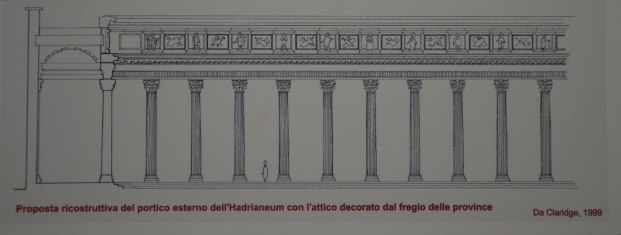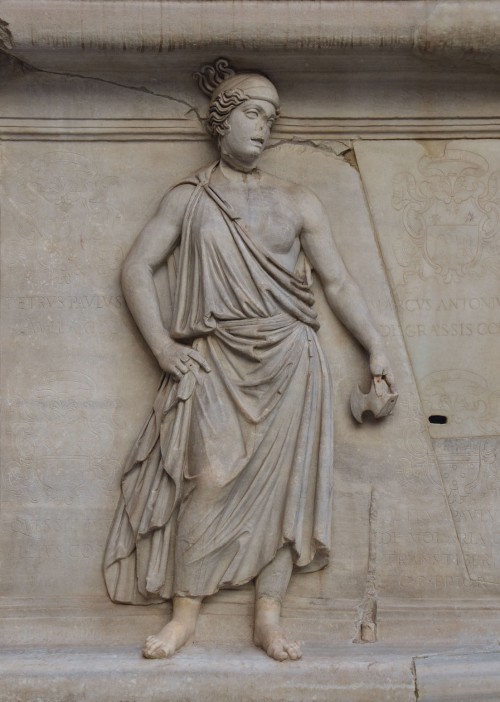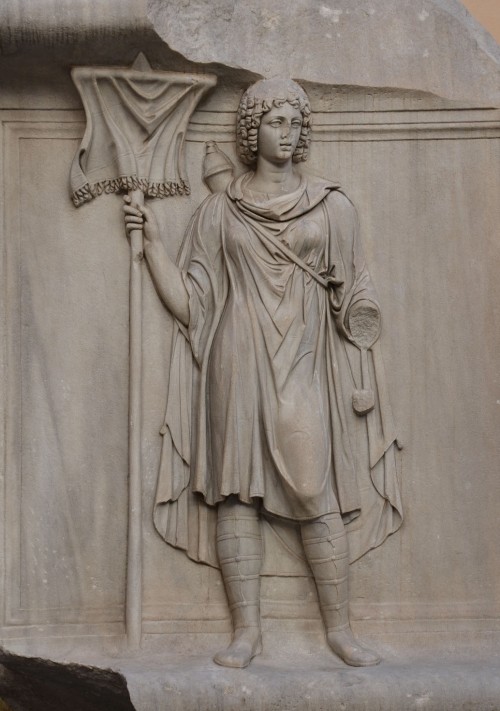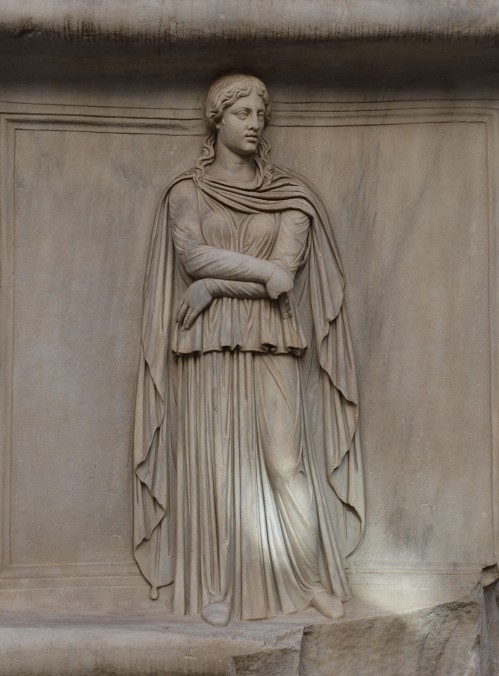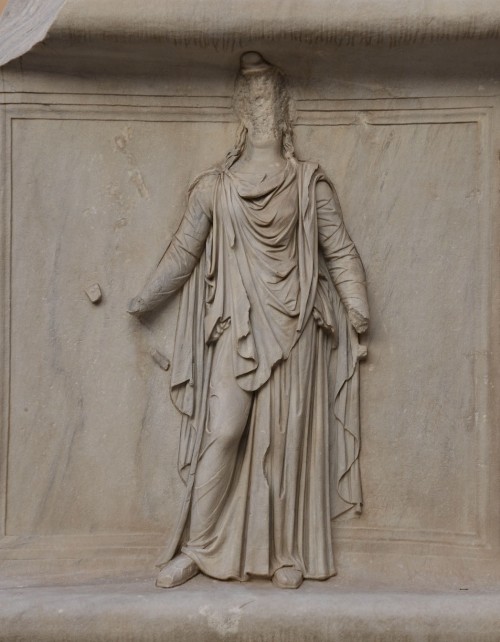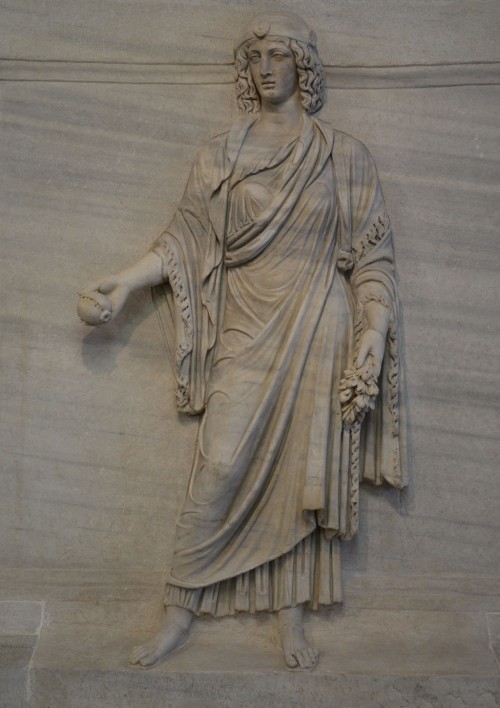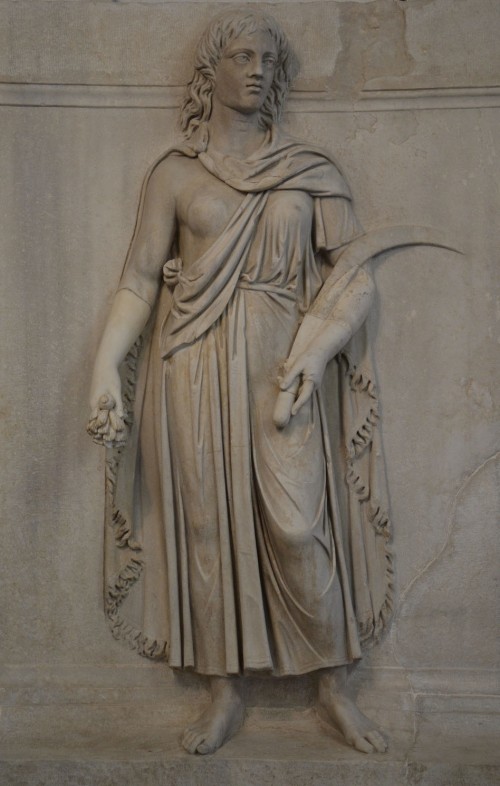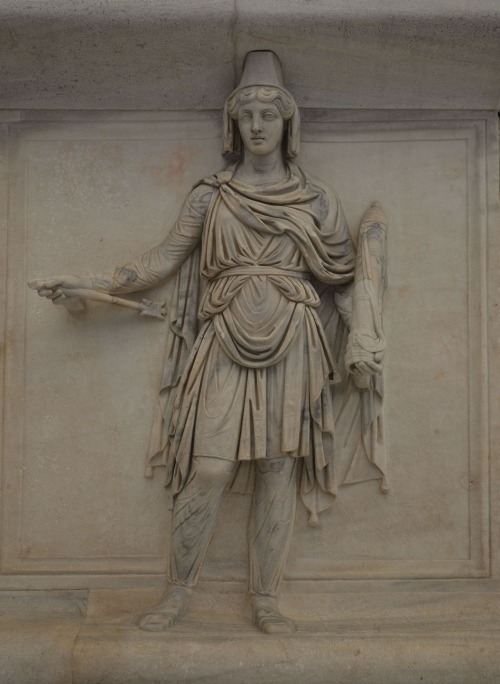Just a short walk from the Pantheon in Rome, in Piazza di Pietra, are the majestic remains of the Temple of the deified Hadrian (Hadrianeum) built by Antoninus Pius, Hadrian’s adopted son and successor. Of the original temple, only eleven columns with capitals and the cella wall are still visible today.
In 1696, during the pontificate of Pope Innocent XII, the surviving part of the temple was incorporated into a large building designed by Carlo Fontana to house the central Customs Office. In 1879-82 the building was modified and its baroque decoration was replaced by a simpler one; in 1928 the wall of the cella was freed from later additions. Today the building houses the Borsa Valori di Roma, Rome’s stock exchange.
The temple to the divine Hadrian was erected in the Campus Martius (Field of Mars) and was dedicated in AD 145. The order is Corinthian and the columns are 15-metre-high and made of Proconnesian marble with its characteristic greyish colour. Only the lower part of the entablature is left from the original (the highest section being a reconstruction). 16th and 17th century drawings show how the edifice looked like when the original entablature was still in place.
The cella and columns (part of the north side of the temple) stand upon a stylobate and large podium. A deep excavation in front of the colonnade has exposed the original ground level of the temple precinct, 5 meter below the present floor level.
Several excavations between the sixteenth and twentieth centuries in the vicinity of the temple have identified the line of a monumental wall in peperino tufa running parallel with the northern flank of the temple. This wall was part of a large enclosure wall that formed the temple’s porticus. During these excavations a series of marble reliefs were also discovered. A recent theory suggesting that they adorned the attic of the portico has been favored by scholars. However various other theories have been offered; the atttic of the temple, the temple podium or the outer temple portico.
Nineteen panels survive from what was potentially a much larger series. They were carved in relief with personifications of provinces altered with depictions of captured arms and armour. The reliefs were found without any inscriptions but each figure was wearing and carrying distinctive costumes and attributes. Scholars have attempted to name the provinces they were meant to represent, but unfortunately they have not all been successfully identified.
The panels are on display in five different collections in Rome and Naples. Seven provinces and three reliefs with trophies are prominently displayed in the courtyard of the Palazzo dei Conservatori in Rome (Capitoline Museums).

Representation of one of the Roman provinces, perhaps Dacia, Libya or Numidia, relief from the Hadrianeum, Capitoline Museums © Carole Raddato
Two restored panels with personification of provinces are housed in the Palazzo Massimo alle Terme.
Another tree reliefs with personification of provinces and two with trophies are housed in the Naples Archaeological Museum.
The other known elements are scattered in several Roman collections or lost, but are known from drawings from the Renaissance and later periods.
The choice to represent the personifications of Provinces within a temple dedicated to the divine Hadrian had a very specific propaganda meaning; these “Provinciae Fideles” were the symbol of political order and of a pacified empire, the clearest beneficiaries of Hadrian’s foreign policy of pacification and unification.
Originally published at Following Hadrian, republished with permission.






